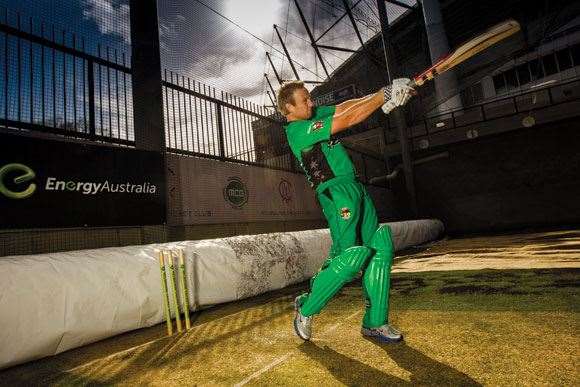White takes us through a typical T20 training day, whatever that might be ...
 Photos by Joseph Feil
Photos by Joseph FeilEXPRESSION SESSION
“When you’re facing bowling in the nets, you have to have a very clear mind. You just react to the ball and look to play accordingly. For T20, you might really hone in on particular shots with some throw-downs, some drill work – where a coach or someone can throw you a ball in a certain spot – or face a bowling machine, which you use to deliver a ball in a certain spot over and over. In terms of facing actual bowling, you’re looking to watch the ball and play properly a bit more, but with a bit more freedom and flair for T20.
“A team Twenty20 nets session will last for quite a while. By the time everyone has their bat and bowl and you do your fielding session, you’re looking at two-three hours’ work. Then again, if you’ve done quite a lot of prep throughout the week in the lead-up to a Twenty20 game, your hours might lessen the day before to make sure you’re fresh and up and going and really energised for the game. It’s hard to be really specific about how much time is spent in the nets. There are a lot of variables.”
NET GAIN
“Bowling in Twenty20 is about bowling to certain situations – what’s required at a particular stage of the game is how you bowl. As a bowler, you need to be able to perform in any circumstance, really. If you’re bowling in the first six overs, you need to be able to take wickets and at the same time you need to be able to – if you’re under the pump and the opposition is batting well – bowl very defensively and stop them from scoring. It can be quite difficult to cover all bases while trying to limit the damage the other team is doing with the bat.”
IN THE FIELD
“Compared to the longer forms of the game, obviously there are a lot more big shots played in Twenty20, which means you’d probably do a lot more higher and longer catching practice than for the other formats. There’s a big emphasis on fielding in T20. More often that not, the best fielding team wins the game; there’s a fair emphasis on run-outs and saving runs.
“Most players in the modern era know what position or particular area they’re fielding in these days, whether they’re an infielder or an outfielder; whether they need to practise their hitting-the-stumps to run people out.
“There’s a fair bit of repetition in catching drills and practice, that’s for sure. From different angles, running in from different directions, getting balls hit over your head, to the side ... You just want to tick off and make sure that when you go out to play in a game, you’re feeling confident that you – if the ball comes to you from any direction – can get your hands on it and you can catch it or make the play to make the run out or stop it cleanly so that you don’t fumble it and the opposition gets another run.”
‒ James Smith
Related Articles

Luck of the Draw

Harman hails lookalike Ponting as 'handsome fella'













